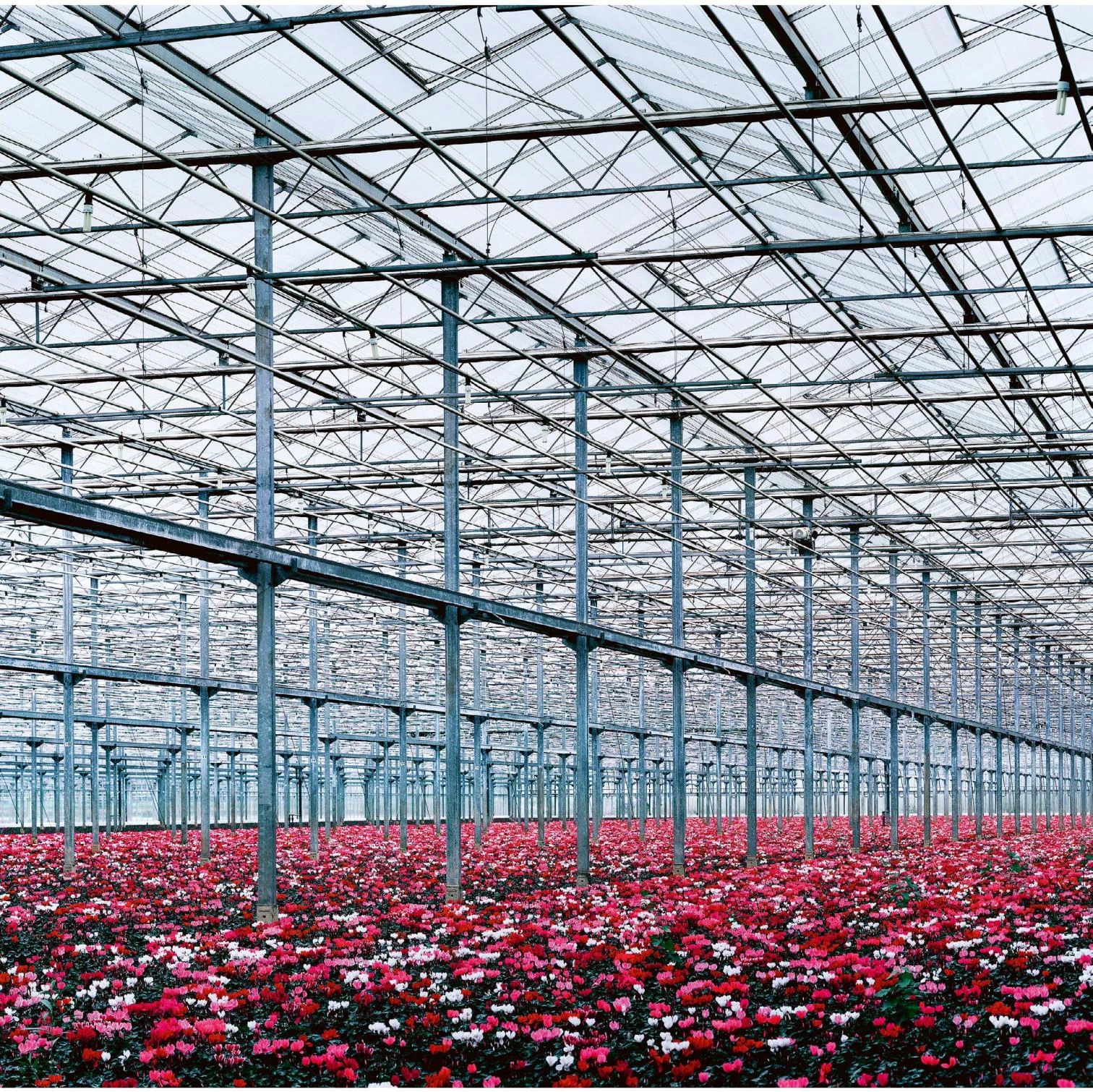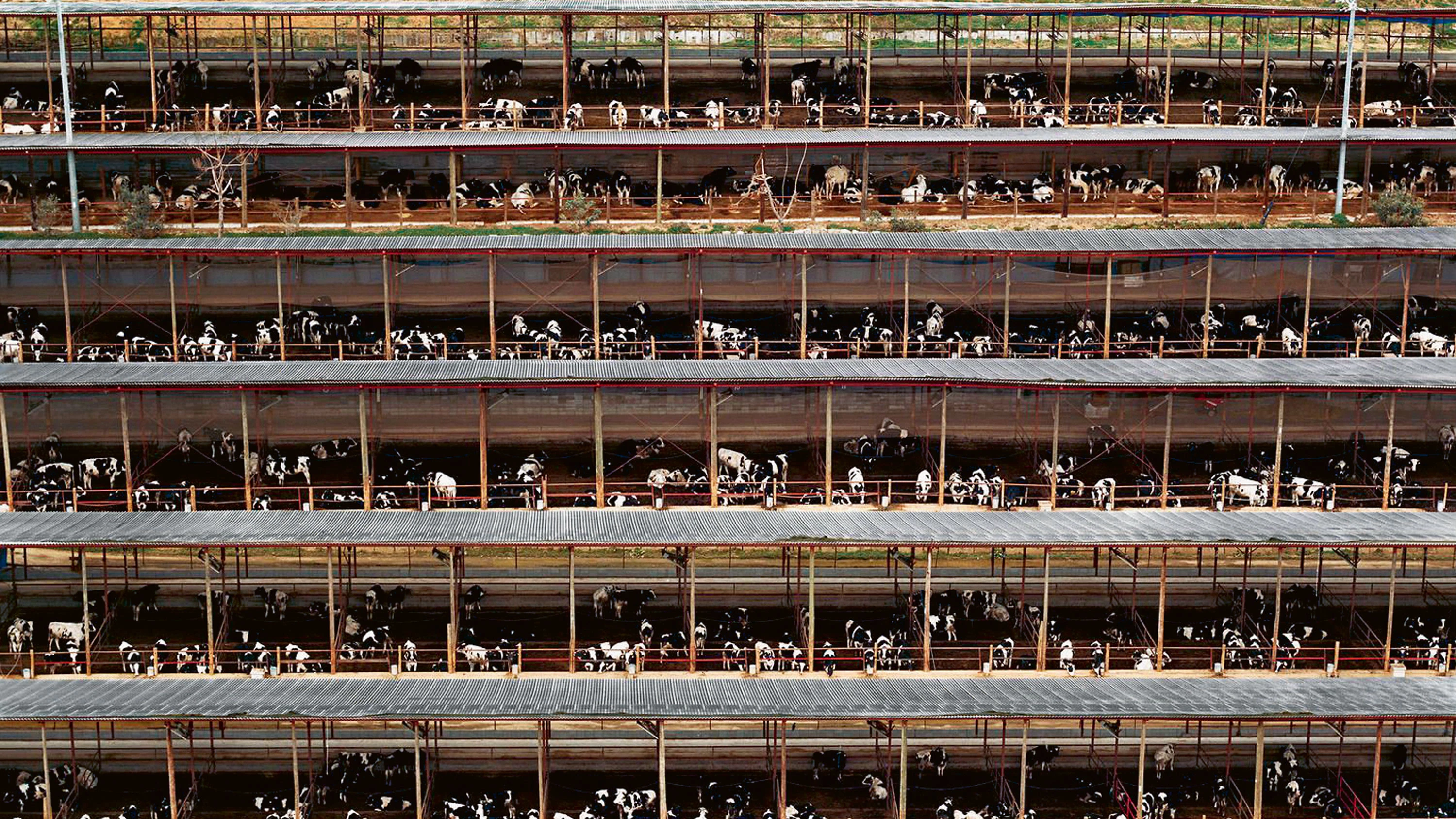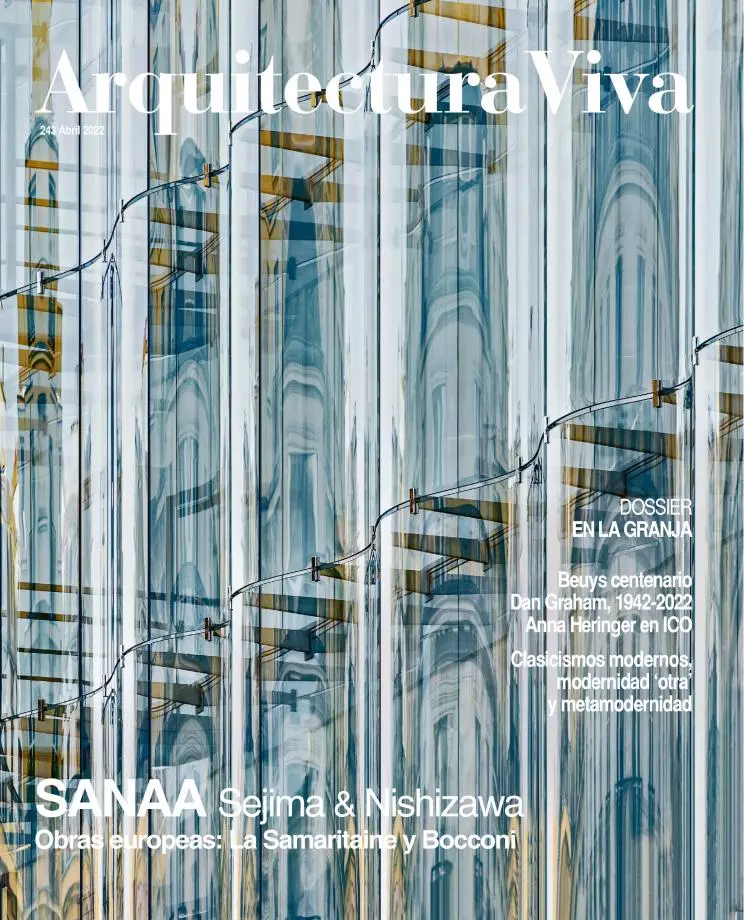Beyond the field
Reinventing Farming

Andreas Gursky, Fukuyama, 2004
Culture was first agriculture. Society, politics, and economics resulted from humanity’s gaining command of the techniques of sowing and harvesting and the parallel skills of raising animals; two practices that required thousands of years to master but which, once the know-how was consolidated, made cities flourish, and with them, an architecture that was socially complex and capable of representing ideologies and the powers-that-be.
Regarded from this prism, the human tendency to build is but an epiphenomenon of another, larger urge: the desire to secure control over nature by domesticating – that is, bringing home – its patterns and its products. Originally, dwellings – just like cities – were not only spaces meant for the protection of individuals and the playing out of political and social control; they were also productive places. No self-respecting house ever went without a food garden and stables, in the same way that cities – even those most defensively walled-in – never failed to give a substantial part of its land over to the tending of crops and the rearing of animals. As a matter of fact, habitation and production were always so closely bound together that it took until the 20th century – and not in all contexts either – for crop cultivation and live-stock-breeding to ‘specialize’; that is, to break away from the city and become the exclusive property of what we call the rural world.
But the environmental crisis (emissions caused by transport and the pollution attributable to large-scale farming), the production crisis (mass imports), and the energy crisis (dependence on unreliable nations) are altering this structure. Not only because the rural world is starting to be the sublime and post-humanist reality that Koolhaas X-rayed in Countryside: A Report, but also because, while the countryside gets urbanized thanks to new technologies, the city progressively regains its lost productive self, as clearly shown by exhibitions like ‘The City of the Future: From Farm to Fork,’ which had a run in Madrid until a few months ago.
Arquitectura Viva presents this complex and changing reality through a selection of four projects that question the commonplaces associated with rural production, and in different ways bring crop-growing and livestock-raising into the city. First, a floating farm trapped in the port of Rotterdam, designed by Goldsmith. Second, a barn in Quebec that gives a humane take on the traditional model of a cow shelter, by La Shed Architecture. Third, a research facility in Roesalare that brings the technique and aesthetic of greenhouses up to date, a work of Van Bergen Kolpa and META. And fourth, an agriculture development center in Izmir by Mert Uslu Architecture, the section of which functionally and symbolically recalls the idea of the primitive hut.

Christoph Morlinghaus, Emsflower, 2017






